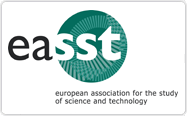Inventing Prediction for Regulation
The Development of (Quantitative) Structure-Activity Relationships for the Assessment of Chemicals at the US Environmental Protection Agency
DOI:
https://doi.org/10.23987/sts.65062Abstract
In policies targeting environmental and health hazards, an effort is frequently made to anticipate and avert more or less probable adverse events. In this context, computerized models are frequently portrayed as superior knowledge tools, for their capacity to extrapolate from existing data and predict hazards. This paper looks at the historical development and use of such models in regulation, with the specific example of structure-activity relationships (SARs) in the regulation of new industrial chemicals at the US Environmental Protection Agency (EPA). It asks how evidential culture(s) in a regulatory organization change, in particular how new methods and forms of knowledge find their place alongside others to forge regulatory decisions. The development and application of, first, a qualitative approach to structure-activity relationships, and then of quantitative models, show that the EPA had the necessary autonomy to imagine and adjust a method emerging in the research environment to respond to regulatory needs. This can be understood from a coproductionist perspective, if adjusted to take into account the bureaucratic knowledge that mediates the imagining and application of prediction in regulatory practice.





